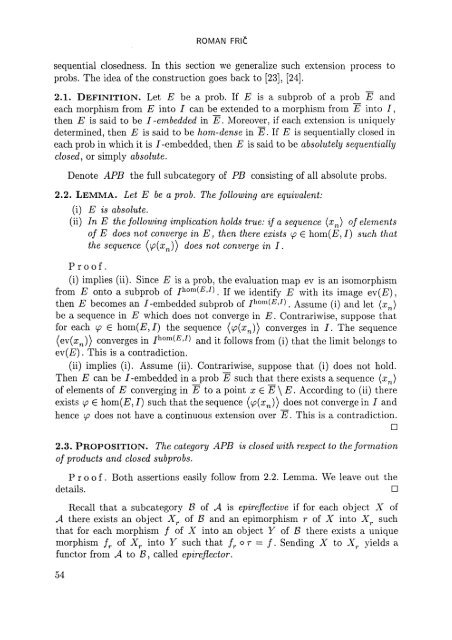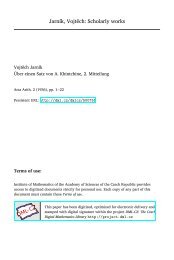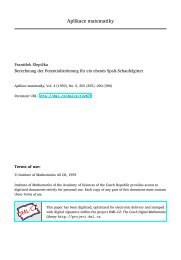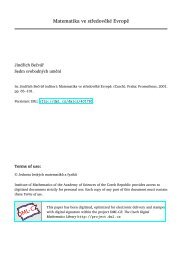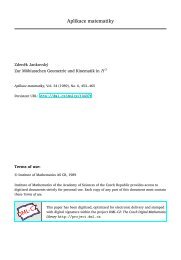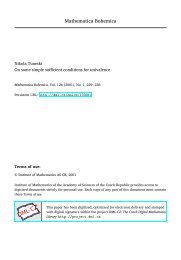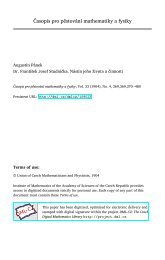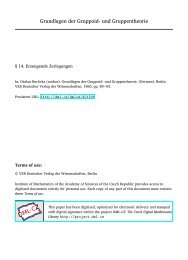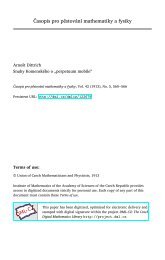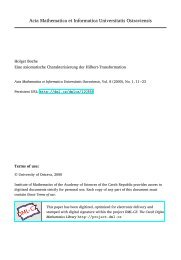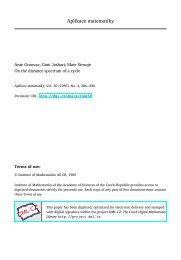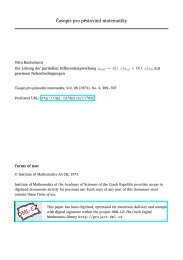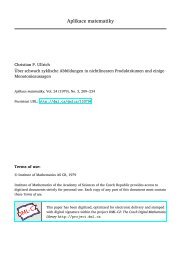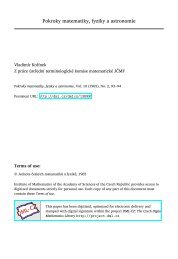Duality for generalized events
Duality for generalized events
Duality for generalized events
Create successful ePaper yourself
Turn your PDF publications into a flip-book with our unique Google optimized e-Paper software.
ROMAN FRlC<br />
sequential closedness. In this section we generalize such extension process to<br />
probs. The idea of the construction goes back to [23], [24].<br />
2.1. DEFINITION. Let E be a prob. If £ is a subprob of a prob E and<br />
each morphism from E into / can be extended to a morphism from E into I,<br />
then E is said to be I -embedded in E. Moreover, if each extension is uniquely<br />
determined, then E is said to be hom-dense in E. If E is sequentially closed in<br />
each prob in which it is /-embedded, then E is said to be absolutely sequentially<br />
closed, or simply absolute.<br />
Denote APB the full subcategory of PB consisting of all absolute probs.<br />
2.2. LEMMA. Let E be a prob. The following are equivalent:<br />
(i) E is absolute.<br />
(ii) In E the following implication holds true: if a sequence (xn) of elements<br />
of E does not converge in E, then there exists (p G hom(E: I) such that<br />
the sequence (p(xn)) does not converge in I.<br />
Proof.<br />
(i) implies (ii). Since E is a prob, the evaluation map ev is an isomorphism<br />
from E onto a subprob of / hom (^J). If we identify E with its image ev(E),<br />
then E becomes an /-embedded subprob of J hom (£>1). Assume (i) and let (xn)<br />
be a sequence in E which does not converge in E. Contrariwise, suppose that<br />
<strong>for</strong> each (p G hom(F7,1) the sequence (cp(xn)) converges in I. The sequence<br />
(ev(sn)) converges in J hom (£>1) and it follows from (i) that the limit belongs to<br />
ev(E). This is a contradiction.<br />
(ii) implies (i). Assume (ii). Contrariwise, suppose that (i) does not hold.<br />
Then E can be /-embedded in a prob E such that there exists a sequence (xn)<br />
of elements of E converging in £ to a point x G E\E. According to (ii) there<br />
exists (p G hom(j5, /) such that the sequence (


